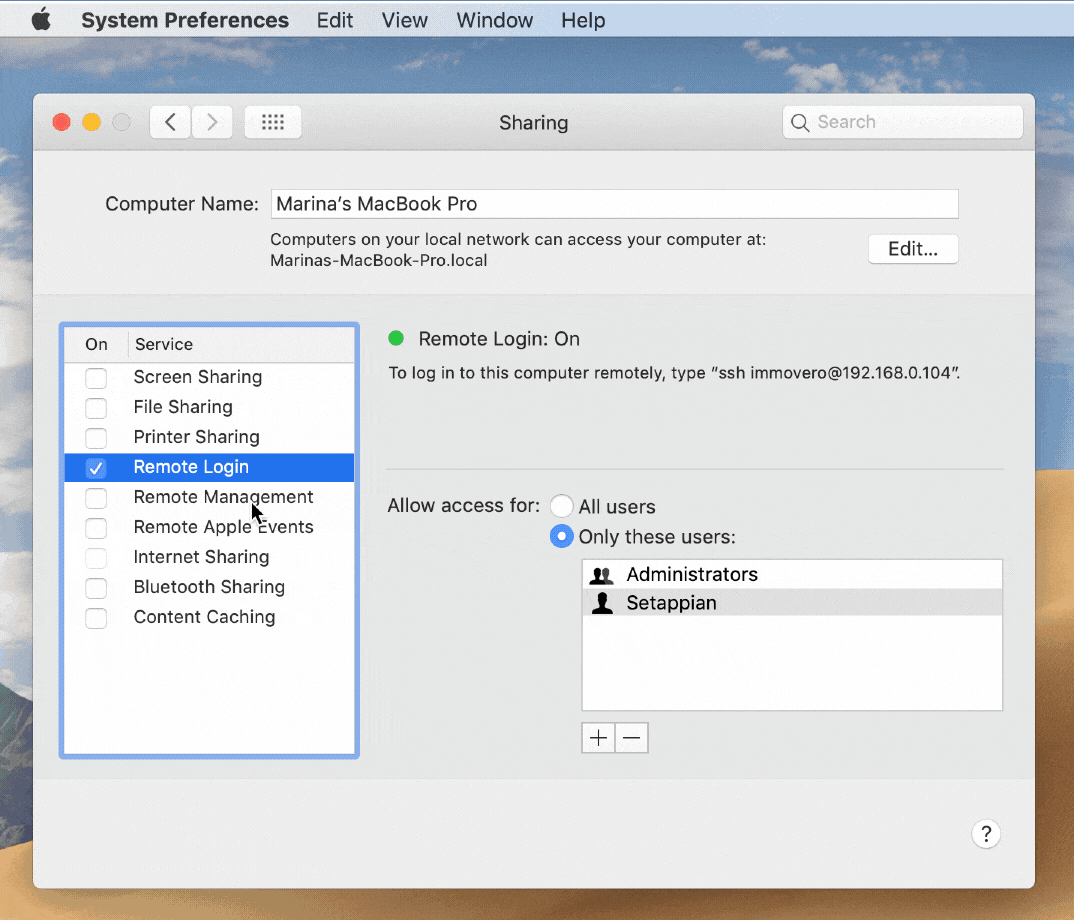DRS offers support across multiple platforms including Linux, Mac, and Windows devices. With DRS, you can access remote computers from iOS and Android mobile devices, including tablets. DRS lets you connect to remote devices over either LAN or the internet. Get the Remote Desktop client. Follow these steps to get started with Remote Desktop on your Mac: Download the Microsoft Remote Desktop client from the Mac App Store. Set up your PC to accept remote connections. (If you skip this step, you can't connect to your PC.) Add a Remote Desktop connection or a remote resource. For devices using the same macOS, you can allow remote Mac login using a Secure Shell (SSH). This enables Mac remote desktop access using a Secure File Transfer Protocol (SFTP). To set up Remote Login: Go to System Preferences Sharing. If you are using Mac OS, install the Microsoft Remote Desktop application from Mac App Store, whereas the Linux user can use RDP clients like Remmina or Vinagre. In this tutorial, we have learned how to configure Remote desktop Connection in CentOS 8 and access using a windows machine.
Rdp To Machine On Vpn
Microsoft this week updated its Remote Desktop client for macOS, which allows users to access their computer through another device remotely. The latest update brought native support for the M1 chip, as well as some new features.
With native support for the Apple Silicon platform and the M1 chip, the app runs with better performance and more energy efficiency, which means that it should consume less battery power when running on a MacBook.
In addition, version 10.6 of Microsoft Remote Desktop for macOS also adds support for client-side IME when using Unicode keyboard mode, integrated Kerberos support in the CredSSP, and improved compatibility with macOS Big Sur. You can check out all the changes in the release notes below:
In this release we’ve made some significant updates to the shared underlying code that powers the Remote Desktop experience across all our clients. We’ve also added some new features and addressed bugs and crashes that were showing up in error reporting.
• Added native support for Apple Silicon.
• Added client-side IME support when using Unicode keyboard mode.
• Integrated Kerberos support in the CredSSP security protocol sequence.
• Addressed macOS 11 compatibility issues.
• Made updates to improve interoperability with current and upcoming features in the Windows Virtual Desktop service.
• Made fixes to address mispaints when decoding AVC data generated by a server-side hardware encoder.
• Addressed an issue where windows from remoted Office apps were not visible despite being present in the app switcher.
Users can download Microsoft Remote Desktop for free on the Mac App Store. There’s also an iOS version available that works with iPhone and iPad.
Read also:
FTC: We use income earning auto affiliate links.More.
-->
Rdp To Machine On Vpn
This section shows how a student can connect to a classroom lab VM from a Mac by using RDP.
Install Microsoft Remote Desktop on a Mac
Open the App Store on your Mac, and search for Microsoft Remote Desktop.
Install the latest version of Microsoft Remote Desktop.
Access the VM from your Mac using RDP
Rdp To Macos
Open the RDP file that's downloaded on your computer with Microsoft Remote Desktop installed. It should start connecting to the VM.
Select Continue if you receive the following warning.
You should see the VM.
Note
The following example is for a CentOS Linux VM.
Rdp To Mac Address
Next steps
Rdp To Machine
To learn how to connect to Linux VMs using RDP, see Use remote desktop for Linux virtual machines
